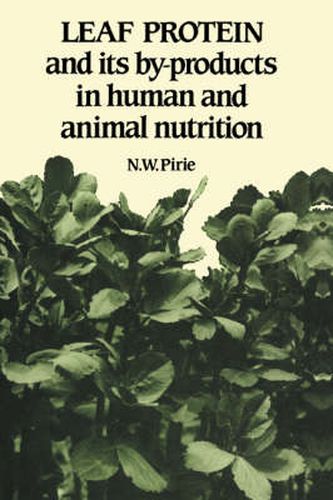Readings Newsletter
Become a Readings Member to make your shopping experience even easier.
Sign in or sign up for free!
You’re not far away from qualifying for FREE standard shipping within Australia
You’ve qualified for FREE standard shipping within Australia
The cart is loading…






This is an updated and extensively revised second edition of N. W. Pirie’s much acclaimed earlier work, Leaf Protein and Other Aspects of Fodder Fractionation (Cambridge University Press 1978). The fibrous character and flavour of many leaf crops impede their use as green vegetables, and feeding them directly to animals is relatively inefficient. The advantages of separating a fraction for use as human food, and a residue for animal feeding, have gained recognition during the last ten years. In suitable climates, fractionating leafy material can yield more edible protein than other forms of agriculture. The book concludes with a discussion of the problems that arise when leaf protein is made and used in practice, and of the potential role of fodder fractionation in human and animal nutrition. This volume will be of practical importance to students and research workers in animal and human nutrition, agriculture and rural development, particularly those with an interest in developing countries.
$9.00 standard shipping within Australia
FREE standard shipping within Australia for orders over $100.00
Express & International shipping calculated at checkout
This is an updated and extensively revised second edition of N. W. Pirie’s much acclaimed earlier work, Leaf Protein and Other Aspects of Fodder Fractionation (Cambridge University Press 1978). The fibrous character and flavour of many leaf crops impede their use as green vegetables, and feeding them directly to animals is relatively inefficient. The advantages of separating a fraction for use as human food, and a residue for animal feeding, have gained recognition during the last ten years. In suitable climates, fractionating leafy material can yield more edible protein than other forms of agriculture. The book concludes with a discussion of the problems that arise when leaf protein is made and used in practice, and of the potential role of fodder fractionation in human and animal nutrition. This volume will be of practical importance to students and research workers in animal and human nutrition, agriculture and rural development, particularly those with an interest in developing countries.